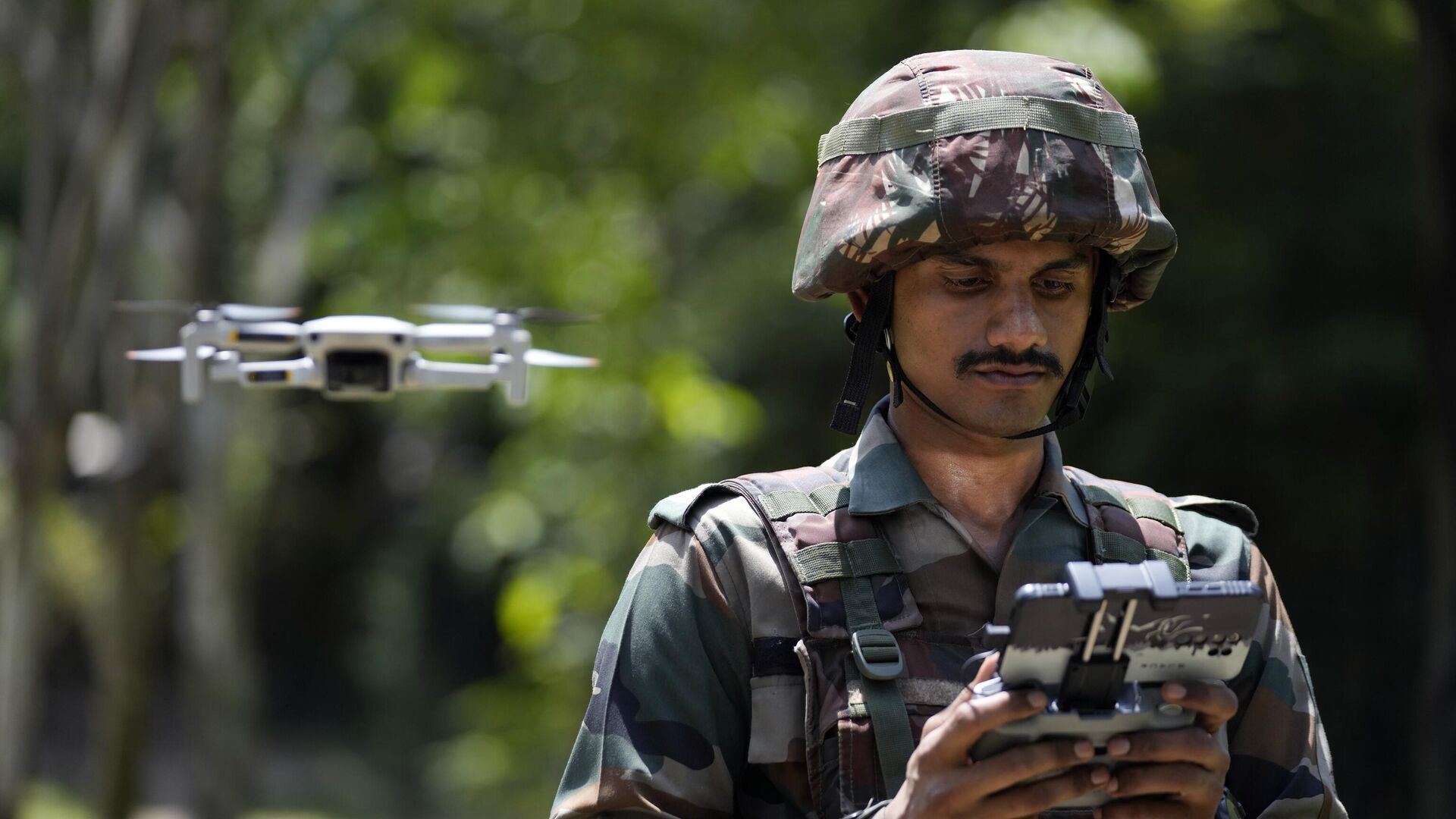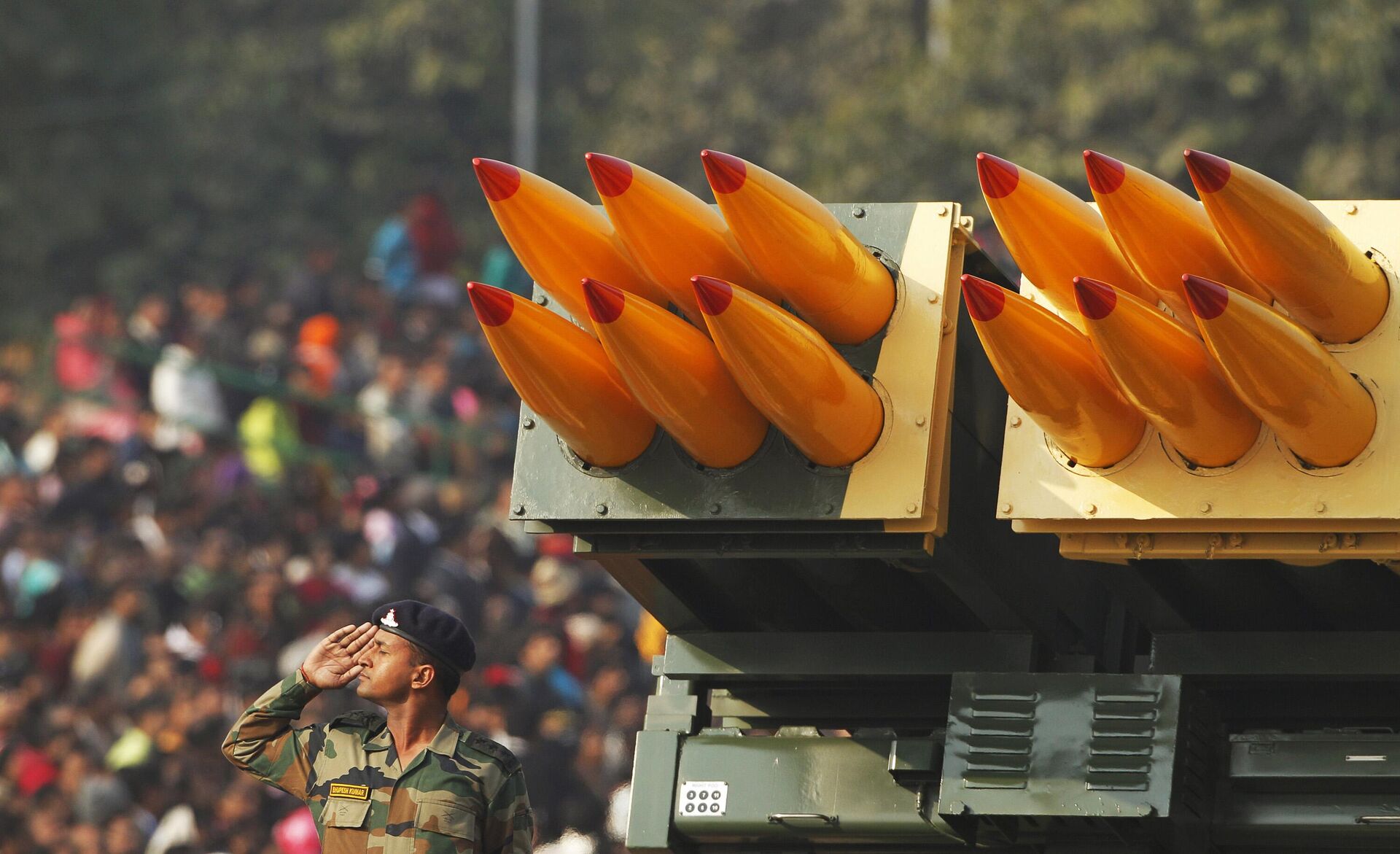https://sputniknews.in/20240313/how-indias-ai-plan-aims-to-boost-military-capabilities-6813065.html
How India's AI Plan Aims to Boost Military Capabilities?
How India's AI Plan Aims to Boost Military Capabilities?
Sputnik India
With an investment of 103.74 billion Indian rupees (US$1.25 billion), the Indian government has given the green light to the IndiaAI Mission, aimed at enhancing the nation's AI sectors.
2024-03-13T13:10+0530
2024-03-13T13:10+0530
2024-03-13T13:10+0530
defenсe news
science & tech
india
china
russia
agni-v
military equipment
military spending
military cooperation
military build-up
https://cdn1.img.sputniknews.in/img/07e8/01/08/6126676_0:160:3072:1888_1920x0_80_0_0_810c04ac67ec81b39d7b1a9646dfb571.jpg
Approximately INR 45 billion ($543 million) will be dedicated to constructing computer infrastructure, while INR 20 billion ($241 million) will be earmarked for backing promising start-ups, with the investment spanned over five years."The Mission will be implemented by 'IndiaAI' Independent Business Division (IBD) under Digital India Corporation (DIC)," the press release noted.Enhancing Operational Efficiency: Utilizing AI for Predictive Maintenance in Defence SystemsThis, facilitated by AI, Chowdhry stated, “allows for quicker and more accurate assessments of threats and opportunities in a battlefield scenario”.Moreover, the General pointed out that “AI plays a pivotal role in predictive maintenance, reducing equipment downtime and ensuring heightened operational readiness. The initiative also envisions leveraging AI for the development of autonomous vehicles, drones, and other unmanned systems, thereby bolstering reconnaissance, surveillance, and strike capabilities.”“This aspect, highlighted in the IndiaAI initiative, has the potential to significantly transform and modernise the capabilities of the Indian military”, Chowdhry noted.Charting the Future: India's Strategic AI Initiative in Defence – From Catch-Up to LeaderIndia has achieved a milestone by conducting a successful test of the Agni-V missile equipped with Multiple Independently Targetable Reentry Vehicle (MIRV) technology, according to Saighal, “this advancement enables a single launch to strike 10 to 12 diverse targets, even when separated by considerable distances. The missile is not only technologically advanced but also incorporates artificial intelligence, ensuring its capability to overcome adversarial defences and autonomously hit designated targets with precision”.Enhancing Battlespace Security with AI-Enabled Deep-Strike Capabilities on Aircraft and Naval VesselsSaighal specified that India stands is among a select group of nations that "possesses the coveted Multiple Independently Targetable Reentry Vehicle (MIRV) capabilities. The recent showcase involved demonstrating this capability specifically in a land-based setting”.For our advanced deep-strike aircraft, incorporating AI is crucial, according to Chowdhry, “as it allows them to operate without confrontation with the enemy. The primary objective is to establish a stand-off capability, avoiding detection by enemy air defences. Similarly, our naval vessels pursue a strategy of staying beyond radar coverage, employing stand-off capabilities to minimize exposure to the battlespace”.
https://sputniknews.in/20240304/indias-defense-minister-unveils-aditi-scheme-to-drive-military-innovation-6733139.html
india
china
russia
Sputnik India
feedback.hindi@sputniknews.com
+74956456601
MIA „Rossiya Segodnya“
2024
Swapna Nair
https://cdn1.img.sputniknews.in/img/07e7/09/12/4320104_0:0:681:681_100x100_80_0_0_ca8a7d4d582609272840ffdd1cde7278.jpg
Swapna Nair
https://cdn1.img.sputniknews.in/img/07e7/09/12/4320104_0:0:681:681_100x100_80_0_0_ca8a7d4d582609272840ffdd1cde7278.jpg
News
en_IN
Sputnik India
feedback.hindi@sputniknews.com
+74956456601
MIA „Rossiya Segodnya“
Sputnik India
feedback.hindi@sputniknews.com
+74956456601
MIA „Rossiya Segodnya“
Swapna Nair
https://cdn1.img.sputniknews.in/img/07e7/09/12/4320104_0:0:681:681_100x100_80_0_0_ca8a7d4d582609272840ffdd1cde7278.jpg
indian government, indiaai mission initiative, ai landscape, deep-tech ai startups, open-source database, ai model training, computer infrastructure, computing access, improving data quality, developing indigenous ai capabilities, attracting top ai talent, enabling industry collaboration, providing startup risk capital, ensuring socially impactful ai projects and bolstering ethical ai, it will drive responsible, inclusive growth of india's ai ecosystem, independent business division (ibd), digital india corporation (dic), indiaai mission, technological prowess, operational efficiency, equipment downtime, ai for the development, autonomous vehicles, drones, and other unmanned systems, reconnaissance, surveillance, and strike capabilities, indian military” agni-v missile, multiple independently targetable reentry vehicle (mirv) technology, air defences, battlespace.
indian government, indiaai mission initiative, ai landscape, deep-tech ai startups, open-source database, ai model training, computer infrastructure, computing access, improving data quality, developing indigenous ai capabilities, attracting top ai talent, enabling industry collaboration, providing startup risk capital, ensuring socially impactful ai projects and bolstering ethical ai, it will drive responsible, inclusive growth of india's ai ecosystem, independent business division (ibd), digital india corporation (dic), indiaai mission, technological prowess, operational efficiency, equipment downtime, ai for the development, autonomous vehicles, drones, and other unmanned systems, reconnaissance, surveillance, and strike capabilities, indian military” agni-v missile, multiple independently targetable reentry vehicle (mirv) technology, air defences, battlespace.
How India's AI Plan Aims to Boost Military Capabilities?
With an investment of 103.74 billion Indian rupees (US$1.25 billion), the Indian government has given the green light to the IndiaAI Mission, aimed at enhancing the nation's AI sectors.
Approximately INR 45 billion ($543 million) will be dedicated to constructing computer infrastructure, while INR 20 billion ($241 million) will be earmarked for backing promising start-ups, with the investment spanned over five years.
“By democratising computing access, improving data quality, developing indigenous AI capabilities, attracting top AI talent, enabling industry collaboration, providing startup risk capital, ensuring socially impactful AI projects and bolstering ethical AI, it will drive responsible, inclusive growth of India's AI ecosystem," according to the official press release.
"The Mission will be implemented by 'IndiaAI' Independent Business Division (IBD) under Digital India Corporation (DIC)," the press release noted.
Enhancing Operational Efficiency: Utilizing AI for Predictive Maintenance in Defence Systems
“The IndiaAI mission holds immense potential to revolutionise the strategic capabilities of the military, elevating its technological prowess and operational efficiency. Through the integration of AI technologies, India can not only enhance our decision-making processes but also optimise resource allocation, elevate situational awareness on the battlefield, and streamline the analysis of vast amounts of data”, Maj Gen Sanjeev Chowdhry (Retd), Director at United Service Institute of India told Sputnik India.
This, facilitated by AI, Chowdhry stated, “allows for quicker and more accurate assessments of threats and opportunities in a battlefield scenario”.
Moreover, the General pointed out that
“AI plays a pivotal role in predictive maintenance, reducing equipment downtime and ensuring heightened operational readiness. The initiative also envisions leveraging AI for the development of autonomous vehicles,
drones, and other unmanned systems, thereby bolstering reconnaissance, surveillance, and strike capabilities.”“This aspect, highlighted in the IndiaAI initiative,
has the potential to significantly transform and modernise the capabilities of the Indian military”, Chowdhry noted.
Charting the Future: India's Strategic AI Initiative in Defence – From Catch-Up to Leader
“Nations such as China have already made strides in AI, and India, being aware of the competition, seeks not only to catch up but to lead. While India is currently a software powerhouse globally, its strategic focus on AI underscores the nation's determination to secure a prominent position in the evolving landscape,” Maj Gen Pramod Kumar Saighal (Retd) told Sputnik India.
India has achieved a milestone by conducting a successful test of the
Agni-V missile equipped with
Multiple Independently Targetable Reentry Vehicle (MIRV) technology, according to Saighal,
“this advancement enables a single launch to strike 10 to 12 diverse targets, even when separated by considerable distances. The missile is not only technologically advanced but also incorporates artificial intelligence, ensuring its capability to overcome adversarial defences and autonomously hit designated targets with precision”.“This marks a significant stride in India's defence capabilities, enhancing its ability to effectively counter potential threats”, the General noted.
Enhancing Battlespace Security with AI-Enabled Deep-Strike Capabilities on Aircraft and Naval Vessels
Saighal specified that India stands is among a select group of nations that
"possesses the coveted Multiple Independently Targetable Reentry Vehicle (MIRV) capabilities. The recent showcase involved demonstrating this capability specifically in a land-based setting”.
“While Russia boasts both land and submarine-based MIRV capabilities, China has, thus far, only exhibited the land-based version. India, aiming for comprehensive three-dimensional capabilities encompassing land, sea, and air, is actively progressing towards achieving this strategic goal”, Saighal added.
For our advanced deep-strike aircraft, incorporating AI is crucial, according to Chowdhry,
“as it allows them to operate without confrontation with the enemy. The primary objective is to establish a stand-off capability, avoiding detection by enemy air defences. Similarly, our naval vessels pursue a strategy of staying beyond radar coverage, employing stand-off capabilities to minimize exposure to the battlespace”.




